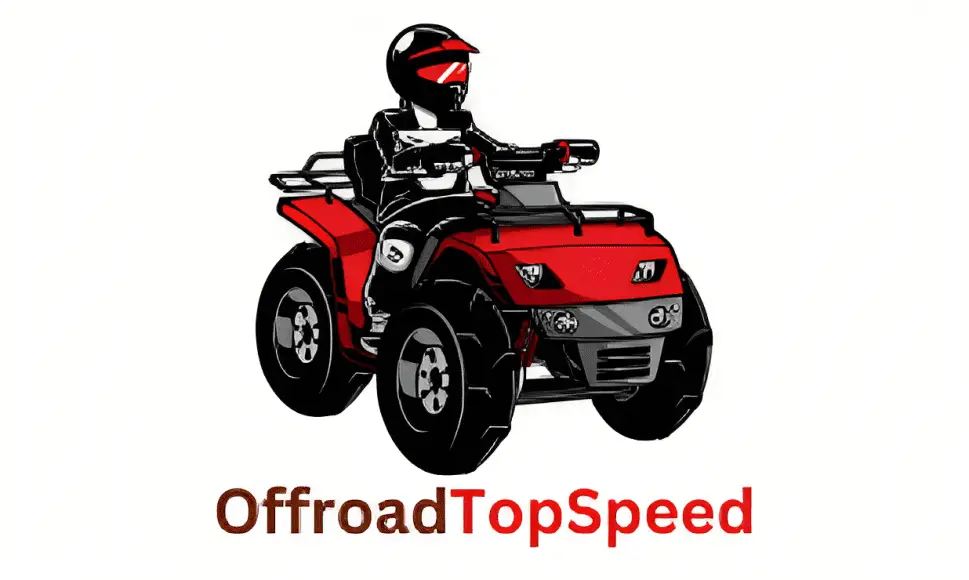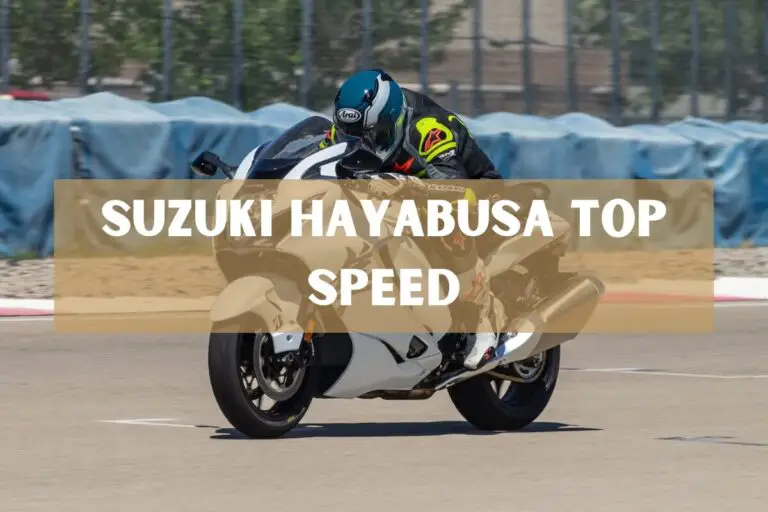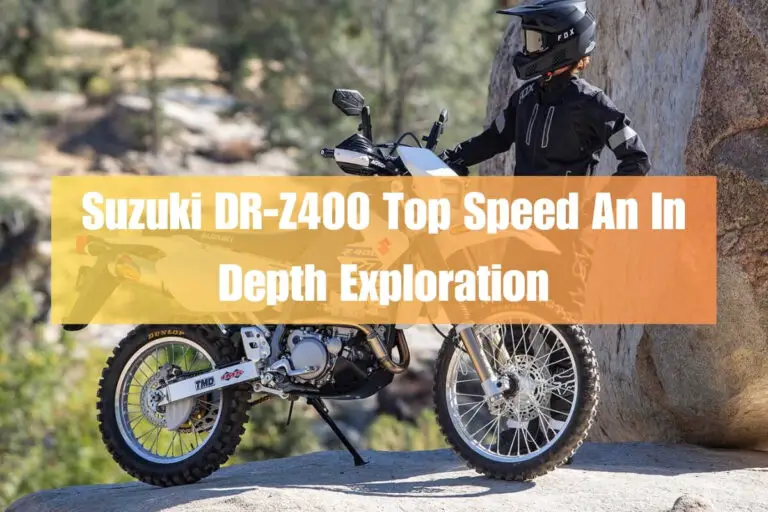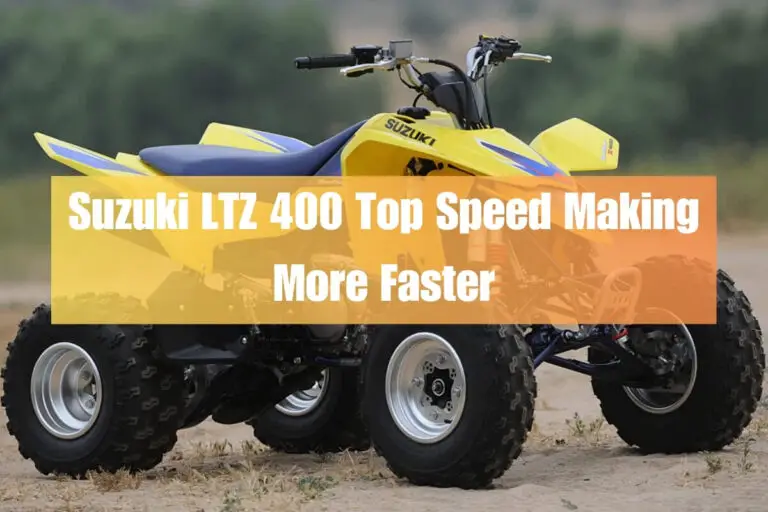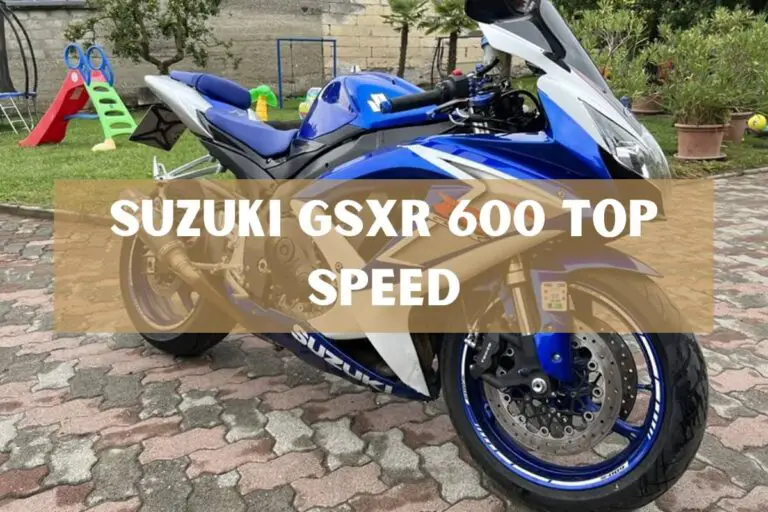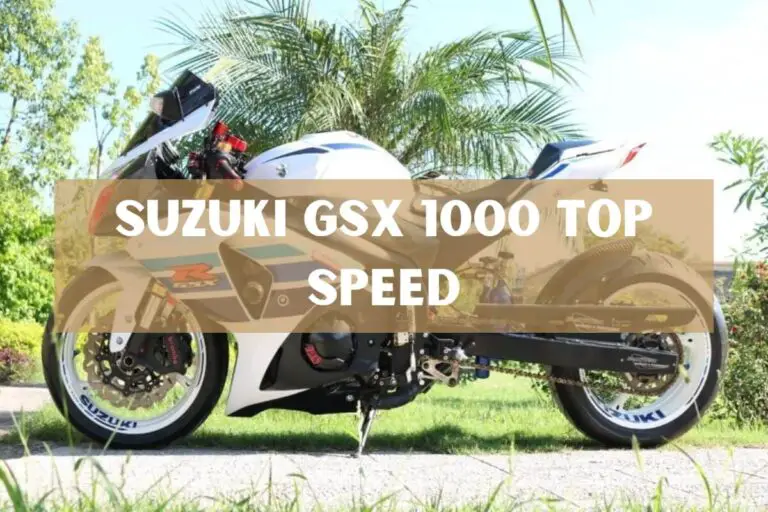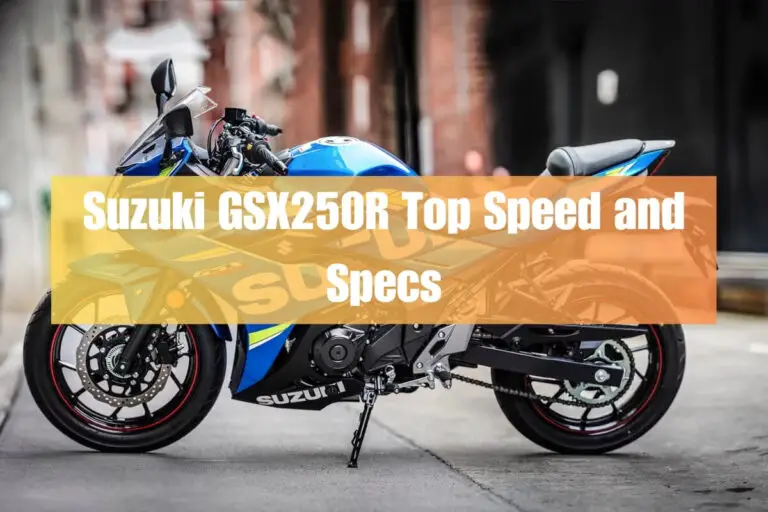Suzuki Hayabusa 1300 Top Speed and Specs
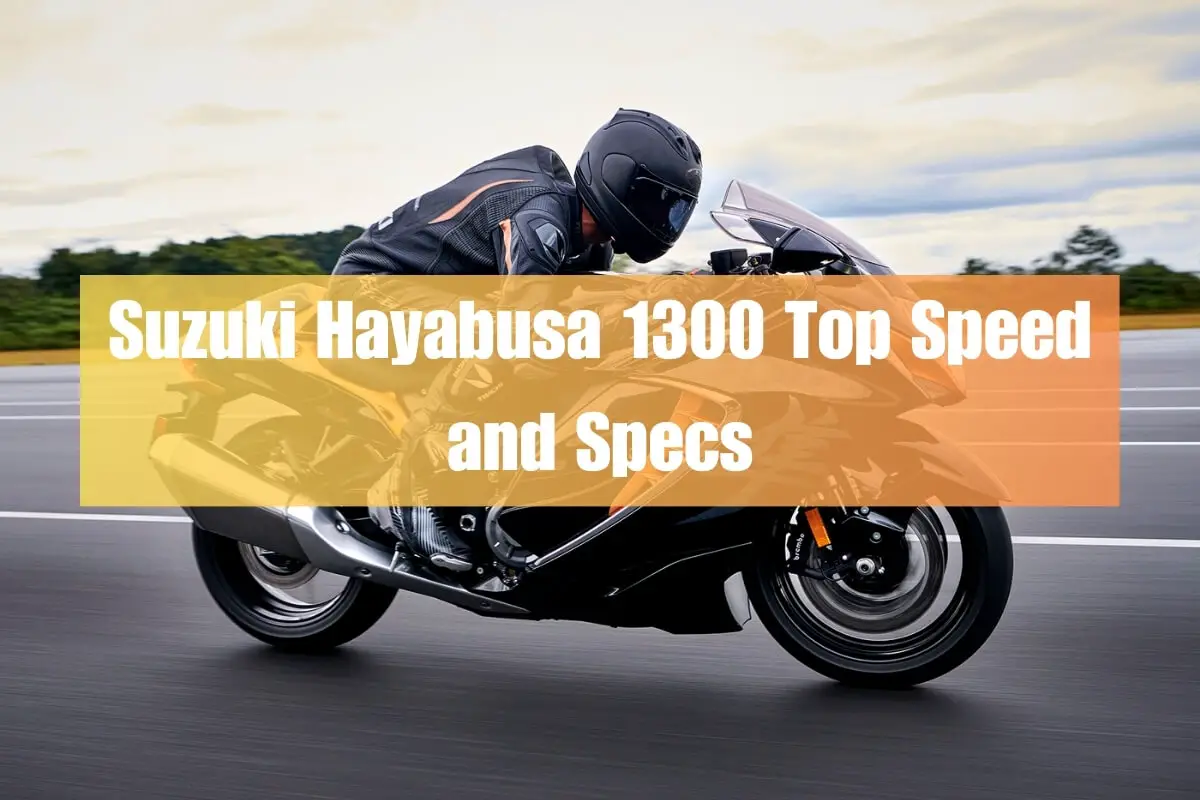
For speed junkies and performance enthusiasts, few motorcycles can match the legendary status of the Suzuki Hayabusa 1300. This hyperbike has held the crown as the world’s fastest production motorcycle for over two decades, courtesy of its mind-blowing top speed capabilities.
If you’re seeking unmatched straight-line performance and acceleration that will pin you to your seat, the Hayabusa 1300 delivers in spades. Its ability to reach real-world top speeds of 188-194 mph (303-312 km/h) is a testament to Suzuki’s engineering prowess.
Design and Performance
Styling Inspired by Speed
The Hayabusa’s design takes inspiration from the peregrine falcon, one of the fastest animals on the planet. Its sleek, aerodynamic full fairing and aggressive stance give it a purposeful, speed-oriented look. Key features include:
- Powerful 1340cc liquid-cooled inline-four cylinder engine
- Advanced electronics like ride-by-wire throttle, traction control, and quickshifter
- Aerodynamic bodywork reducing drag at high speeds
Blistering Top Speed
Officially listed with a top speed of 186 mph (299 km/h), real-world tests have shown the Hayabusa is capable of reaching an incredible 188-194 mph (303-312 km/h). This is thanks to its slippery aerodynamics and immense engine power.
Several factors contribute to the Hayabusa’s ability to achieve such blistering pace:
- Optimized power-to-weight ratio for maximum acceleration
- Sculpted fairing and low crouching design to cheat the wind
- Engineering focused on minimizing drag at extreme speeds
Lightning Quick Acceleration
It’s not just the top speed that’s mind-blowing – the Hayabusa’s acceleration is other-worldly too. This beast can rocket from 0-60 mph in just 2.7 heart-stopping seconds.
Propelling it forward is a 1340cc inline-four producing 187 hp and 110 lb-ft of torque. The explosive power delivery and closely-stacked gear ratios allow it to simply obliterate straights.
Mechanical Specifications
| Component | Specification |
|---|---|
| Engine | 1340cc liquid-cooled inline-four, DOHC |
| Power | 197 PS (187 hp) @ 9,700 rpm |
| Torque | 155 Nm (110 lb-ft) @ 7,200 rpm |
| Transmission | 6-speed constant mesh |
| Front Suspension | Inverted telescopic fork, fully adjustable |
| Rear Suspension | Link-type, oil damped, adjustable |
| Front Brakes | Dual 320mm discs, radial-mount calipers |
| Rear Brake | 240mm disc |
| Wheels | 120/70-17 (front), 190/50-17 (rear) |
Beyond the powerful engine, the Hayabusa benefits from advanced electronics like ride-by-wire throttle bodies, selectable engine maps, and switchable traction control system. This allows riders to tailor the power delivery to suit their preference or conditions.
On the Road Experience
While its performance numbers are staggering, some reviews note the Hayabusa isn’t as nimble or agile as typical sportbikes when pitching into corners. The long wheelbase and relaxed rider triangle make it feel more planted and stable at velocity.
Skilled riders will appreciate the precise steering and powerful brakes that provide confidence when pushing closer to the limits. Overall, the Suzuki offers a sublime riding experience, especially when opening up the throttle on open roads.
What Makes It So Fast?
You may be wondering – what enables the Hayabusa 1300 to achieve such incredible velocities? A few key factors:
Optimized Power-to-Weight Ratio
With 197 hp on tap from the mighty 1340cc engine, the Hayabusa has prodigious power. But it’s the combination of that power with a relatively lightweight package (471 lbs dry) that allows meteoric acceleration.
Aerodynamic Design
Countless hours of wind tunnel testing and computational fluid dynamics analysis went into sculpting the Hayabusa’s bodywork. The slippery fairing and low crouching stance minimize drag forces at extreme speeds.
High Speed Gearing
The transmission’s tightly-spaced gear ratios, particularly in the higher gears, enable the Hayabusa to capitalize on its power and aerodynamic advantages as speed builds.
Suzuki Hayabusa Owner Reviews
Despite being over 20 years old, the Hayabusa still has a rabidly loyal fan base of owners singing its praises:
“The acceleration is mind-blowing – you need to experience it to believe it. Yet it’s also relatively affordable to own and maintain compared to exotic Italian superbikes.” – @ SpeedFreak69
“It’s a rocket ship on the highway, effortlessly eating up miles. But it’s not the most agile bike for tight canyon roads or track days.” – @ HayabusaRider
Some common gripes include excessive weight making it feel cumbersome at low speeds, and concerns over the high running costs of such a powerful machine.
How It Stacks Up
In the world of ultra-high performance motorcycles, the Hayabusa has some formidable competitors vying for “world’s fastest” bragging rights:
Kawasaki Ninja ZX-14R
- Top speed: 186 mph (299 km/h)
- 1441cc engine, 200 hp
- Heavier, more upright riding position
Kawasaki Ninja H2/H2R
- Top speed: 249+ mph (400+ km/h)
- Supercharged 998cc engine, 310+ hp
- Exotic performance at exotic pricing
BMW S1000RR
- Top speed: 193 mph (310 km/h)
- 999cc inline-four, 207 hp
- More track-focused, lighter weight
While rivals may edge it out in top speed or power figures, the Hayabusa remains an iconic, relatively affordable option that delivers thrilling real-world performance.
Modifications for More Speed
For some owners, the Hayabusa’s already lofty performance just isn’t enough. A healthy aftermarket exists for those seeking to extract even more velocity:
Engine Tuning and Bolt-Ons
- Full exhaust systems
- Performance air filters
- Engine control module remapping
Aerodynamic Upgrades
- Replacement windscreen for improved aero
- Aftermarket fairings and bodywork
Wheels, Suspension, and Brakes
- Lightweight wheels to reduce unsprung mass
- Suspension upgrades for improved stability
- Stickier tires for more grip
With some choice modifications and tuning, owners have pushed the Hayabusa well past the 200 mph barrier on race tracks and top speed events.
Pros and Cons
Before taking the plunge on a Hayabusa, consider these key pros and cons:
Pros:
- Blistering acceleration and top speed
- Iconic, aggressive styling
- Advanced performance tech like traction control
- Relatively affordable compared to exotics
Cons:
- Expensive to buy and run (fuel, insurance, maintenance)
- Less agile and nimble than focused sportbikes
- Heavyset weight can be cumbersome at low speeds
Viable Alternatives
Not convinced the Hayabusa is the hyperbike for you? Here are some alternatives to consider:
Budget Alternative: Used Superbikes
- Slightly older 1000cc sportbikes like the Yamaha R1, Honda CBR1000RR
- Still immense performance at a fraction of the Hayabusa’s cost
Performance Alternative: Kawasaki Ninja H2
- Supercharged 998cc engine with over 310 hp
- Even more extreme acceleration and top speed…if you can afford it
All-Rounder Alternative: BMW S1000RR
- 207 hp compact inline-four with 193 mph top speed
- More agile, balanced performance for street and track
The Hayabusa occupies a unique space as an affordable, real-world hyper-performance motorcycle. But it has compromises in terms of agility and comfort compared to more focused supersport models like the BMW S1000RR.
Value and Ownership
One of the major appeals of the Suzuki Hayabusa is its combination of extreme performance with relative affordability compared to exotic alternatives.
Brand new, the 2023 Hayabusa 1300 has an MSRP starting around $18,799. Used examples can be found for much less:
- 2016 Model: $12,000 – $14,000
- 2010 Model: $8,000 – $10,000
However, it’s important to factor in the higher running costs associated with such a powerful machine:
- Increased fuel consumption (25-30 mpg)
- Premium high-octane fuel recommended
- Expensive maintenance and repair costs
- Higher insurance premiums due to performance
Suzuki does offer extended warranty coverage up to 7 years which can provide some peace of mind.
Common Issues
While the Hayabusa has an overall reputation for reliability, there are some common issues owners should be aware of:
- Cracking of the aluminum subframes on early models (’99-’07)
- Front brake fade/overheating after repeated hard stops from high speeds
- Minor quality/fitment issues with some plastics and fasteners
Many of these were addressed in later model years through design changes and recalls.
FAQs
Is the Hayabusa suitable for beginners?
With over 190 hp on tap and a dry weight exceeding 470 lbs, the Hayabusa’s power and size make it extremely challenging for new riders to handle safely. Most experts recommend building experience on lighter, less extreme machines first.
How does the Hayabusa’s top speed compare to its horsepower rating?
The Hayabusa’s 197 hp peak power is certainly immense, but not the highest output in the liter-bike class. Its ability to achieve a 190+ mph top speed is aided by excellent aerodynamics and a slick power delivery that maximizes its horsepower at the top end.
What are legal ways to increase the Hayabusa’s top speed?
From the factory, the Hayabusa is electronically limited to 186 mph (299 km/h) for safety reasons. Legal options to go faster include upgrading exhaust, intake and ECU tuning to unleash more horsepower. However, any top speed modifications should only be attempted on a closed racing circuit, never public roads.
Final Verdict
The Suzuki Hayabusa 1300 has carved out a legendary reputation as an affordable street-legal missile capable of leaving nearly everything else in its wake. Its strengths clearly lie in face-melting acceleration and relentless straight-line performance up to triple-digit velocities.
However, it’s not a perfect all-arounder – heavier weight and a more relaxed riding position trade some agility compared to leaner sportbikes. But for those who crave top speed bragging rights and brutal thrust, the ‘Busa delivers in spades.
Potential buyers should be honest about their skill level, riding needs and budget before taking the plunge. The Hayabusa’s performance is certainly intoxicating…but also immensely respect-worthy in the wrong hands.
If you have the means and the need for speed, the Suzuki Hayabusa stands as an iconic option for maximum velocity, whether scratching that straight-line itch or blasting across open highways. Just don’t let its reputation lull you into overconfidence – this beast demands a smooth throttle hand and commitment to safety first.
